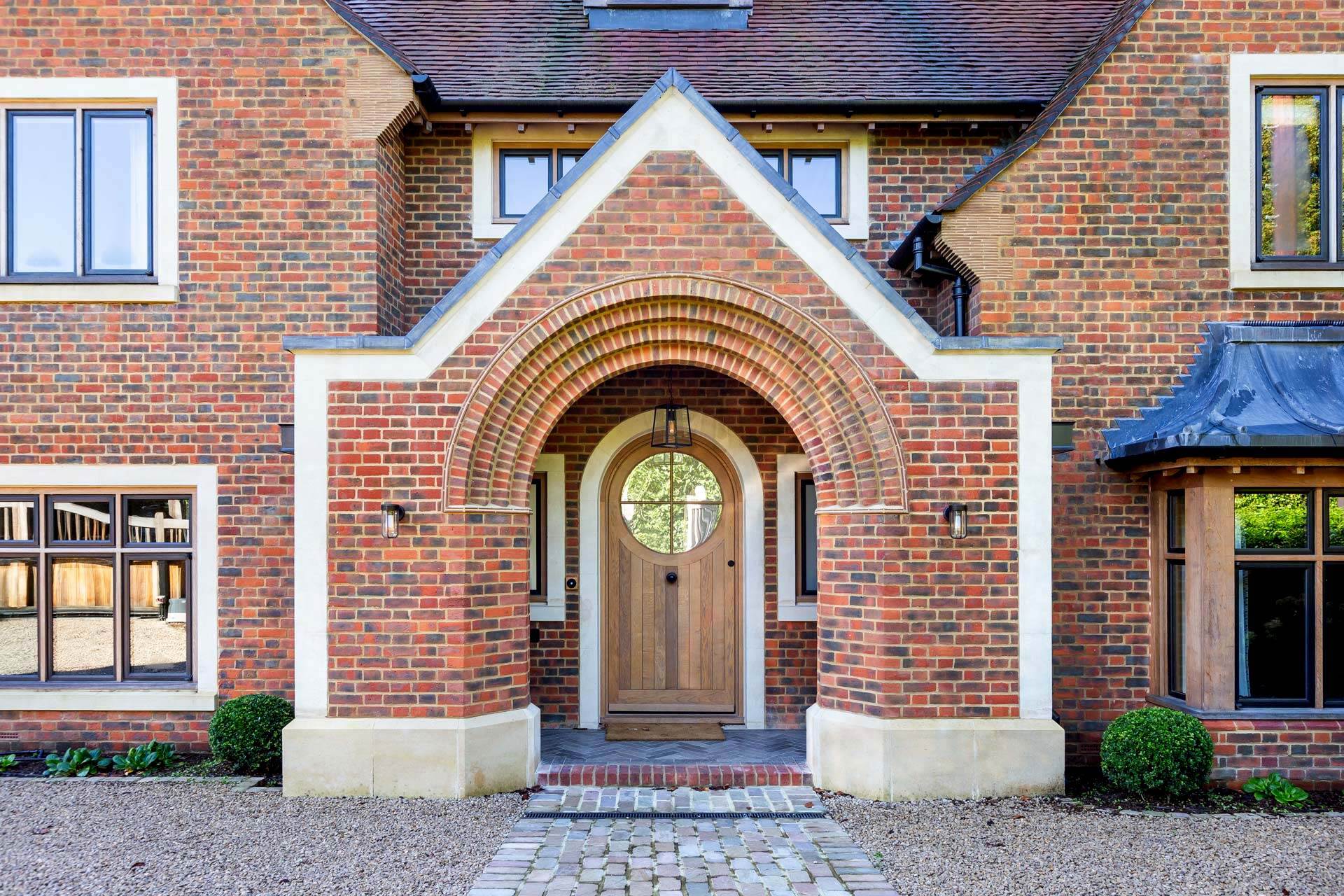5 min read
Celebrating Arts & Crafts Architecture and Joinery
By: Vickie Dennis on 14-Mar-2025 13:53:39

The Arts and Crafts movement, which emerged in the late 19th century, revolutionised architecture and design by emphasising handcraft, quality materials, and a rejection of mass production. With its roots deeply embedded in the ideals of the British Industrial Revolution and a reaction to the growing influence of mechanisation, Arts and Crafts architecture and joinery embodied the pursuit of beauty, utility, and traditional craftsmanship.
The Birth of the Arts & Crafts Movement
The Arts and Crafts movement was born in the 1860s, as a response to the industrialisation and mass production methods that dominated the Victorian era. Leading figures like William Morris, John Ruskin, and Charles Voysey were at the forefront, advocating for a return to craftsmanship, simplicity, and authenticity in design. These early pioneers were disillusioned by the dehumanizing effects of factory-made goods and believed that good design should be accessible, functional, and beautiful.
In architecture, the Arts and Crafts movement sought to create buildings that harmonised with nature, used natural materials, and featured handcrafted details. The focus was on creating spaces that felt organic and lived in, often blending seamlessly with their surroundings, particularly in suburban and countryside settings.
 Arts & Crafts Architecture: Form and Function
Arts & Crafts Architecture: Form and Function
In Arts & Crafts architecture, form was always dictated by function. The movement emphasised practicality, with an understanding that design should be rooted in the way people actually lived and worked. The result was homes that were designed to be both aesthetically pleasing and highly functional, focusing on comfort, simplicity, and an intimate relationship with nature.
Key characteristics of Arts & Crafts architecture include:
- Natural Materials: Stone, wood, and brick were commonly used to give buildings a rustic and organic feel. Exposed timbers, handcrafted brickwork, and local stone helped to ground the design in its natural environment.
- Cottage-style Homes: Many Arts & Crafts houses adopted the style of country cottages with steeply pitched roofs, overhanging eaves, and large, welcoming windows. This style encouraged cosy interiors, where people could relax and enjoy their surroundings.
- Handcrafted Details: Every detail in Arts & Crafts architecture was considered. From bespoke cabinetry to custom woodwork, designers wanted each element to feel hand-crafted and unique.
- Integrated Interiors: The relationship between the building’s structure and its interior was essential. Designers ensured that every space flowed naturally, with materials, colour palettes, and furniture all working in harmony.
-1.png?width=542&height=469&name=Untitled%20design%20(1)-1.png)
Joinery: The Heart of Arts & Crafts Design
Joinery is one of the most important aspects of Arts & Crafts architecture, as it encompasses the fine woodworking that gives these buildings their character and individuality. Skilled carpentry and joinery were highly valued during the Arts & Crafts movement, with the belief that woodwork should be as expressive and beautiful as the rest of the design. Doors, windows, and staircases were particularly significant, serving as both functional elements and artistic statements.
Key Aspects of Arts & Crafts Joinery:
- Doors with Character: Arts & Crafts doors were often handcrafted from solid wood, such as oak or mahogany, and featured detailed joinery techniques. Many doors incorporated vertical planking, decorative iron hardware, and stained glass inserts to add visual interest. The craftsmanship was evident in the mortise and tenon joinery and the subtle variations in hand-carved details, making each door unique.
- Exposed Joinery in Windows: Windows in Arts & Crafts homes were designed to emphasise craftsmanship and natural materials. Wooden window frames, often featuring pegged joints and exposed tenons, showcased the integrity of construction. Leaded and stained glass panels were common, incorporating intricate floral or geometric designs that diffused natural light in a warm, inviting way.
- Intricate Staircases: Staircases in Arts & Crafts homes were works of art in their own right. Built from rich, durable woods like oak and walnut, they featured handcrafted balusters, newel posts, and railings. Many staircases had open stringers with exposed joinery, further emphasising the movement’s appreciation for honest craftsmanship. Carved details, turned spindles, and decorative brackets often adorned these staircases, adding to their sculptural beauty.
- Wood Panelling and Trim: Arts & Crafts interiors frequently showcased wood panelling along staircases, doors, and window surrounds. This panelling, often hand-carved or featuring subtle decorative grooves, created a sense of warmth and continuity throughout the home. The trim around windows and doors was carefully crafted, with deep-set frames and layered moulding to enhance the architectural presence.
- Stained Glass and Artful Transoms: Many homes from this era featured stained-glass windows set within wooden transoms above doors or stairwells. These elements allowed for soft, colourful light to filter through the space while adding an artistic touch to the structural design. The combination of wood and glass created a rich interplay of texture and light, reinforcing the handcrafted aesthetic.
The Arts & Crafts movement celebrated honesty in materials and craftsmanship, and this philosophy was nowhere more evident than in the doors, windows, and staircases of its homes. Every joint, panel, and carving were a testament to the dedication of artisans who sought to create spaces that were as enduring as they were beautiful.
 Celebrating Craftsmanship and Legacy
Celebrating Craftsmanship and Legacy
Arts and Crafts architecture and joinery serve as a reminder that beauty lies in the details and that design is about more than just aesthetics—it’s about the story and craftsmanship behind the work. Whether you're drawn to the rustic charm of an Arts & Crafts home or the intricate joinery of a custom wood piece, the movement’s emphasis on quality, nature, and craftsmanship continues to resonate.
If you’re looking to incorporate stunning timber joinery into your own home or project, Salisbury Joinery is here to help. With our expertise in traditional craftsmanship and deep knowledge of timber joinery, we can bring your vision to life with high-quality bespoke doors, windows, and staircases. Contact us today to discuss your project and let our skilled team guide you through the process with expert advice and exceptional craftsmanship.
Banner image from KM Grants
Related Posts
Energy Efficiency and Security Compliant Traditional Timber Box Sash Windows
A lot of suppliers will say that you need to make a choice when it comes to box sash windows: you...
Parts of a door explained
Doors form a vital part of the make-up of any property. Most homes and buildings will feature...
The advantages of choosing a UK bespoke joinery manufacturer
British joinery manufacturing has a rich heritage and a long-standing tradition of quality...


